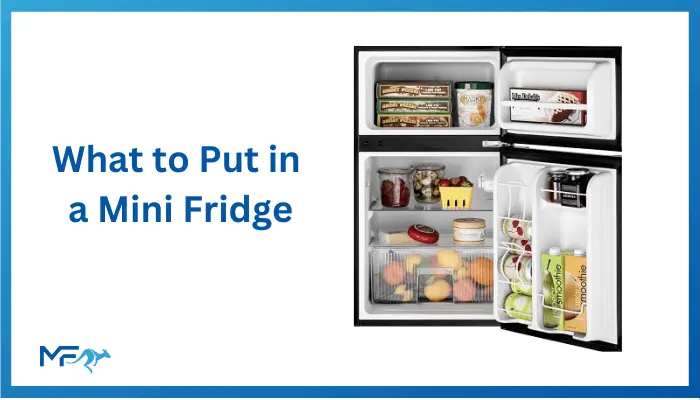How Many Watts Does a Mini Fridge Use?
Power Usage of Mini Fridge
Jump Straight to Number of Watts a Mini Fridge Uses
Other Guides: How much does a mini fridge cost, What to Put in a Mini Fridge, How To Defrost A Mini Fridge
A mini fridge is a small version of a standard fridge commonly used in dorm rooms, offices, bedrooms, or small living spaces. If you are looking to know How Many Watts Does a Mini Fridge Use? To get the answer, keep reading!
How Many Watts Does a Mini Fridge Use?
These compact appliances have a lower capacity and are designed to provide cooling and storage solutions for a limited amount of food and beverages. Power consumption depends upon the usage, size, and efficiency of a small fridge.
Factors Affecting the Energy Consumption
On average, a mini fridge typically uses around 50 to 100 watts of electricity when it is running. However, this number can fluctuate depending on several factors, such as the brand, model, age, and energy efficiency of the appliance.
Energy Efficiency and Energy Star Certification
One crucial aspect that affects a mini fridge’s energy consumption is its energy efficiency rating. The highly energy-efficient fridge consumes less electricity. When shopping for a mini fridge, it’s essential to look for models with an Energy Star certification, as these are designed to meet strict energy efficiency guidelines set by the U.S. Environmental Protection Agency (EPA).
Cooling System and Electricity Usage
The cooling system is the primary consumer of electricity in a mini fridge. Most mini fridges use a compressor-based cooling system, which operates similarly to a standard refrigerator. The compressor compresses refrigerant gas, causing it to release heat and cool down. Then, the cooled refrigerant circulates through the fridge’s interior, absorbing heat and maintaining a low temperature.
Location and Ambient Temperature
Moreover, power consumption is affected by the location and ambient temperature of the mini-fridge. Placing the fridge in a warm environment or under direct sunlight can cause it to work harder to maintain the desired internal temperature, leading to increased energy usage.
Door Openings and Energy Consumption
The frequency of door openings also affects energy consumption. Every time you open the door, it loses cold air. Frequent door openings and prolonged exposure to warm air will result in the fridge working harder to cool back down, leading to higher energy usage.
Importance of Insulation for Energy Efficiency
The insulation quality of the mini fridge is a critical aspect that can impact its energy efficiency. Upgraded Insulation help keep temperatures stable inside, reduces stress on the cooling system, and minimizes energy consumption.
Optimizing Energy Usage with Thermostat Settings
One effective way to optimize energy usage is to set the mini fridge’s thermostat to an appropriate temperature. A temperature range of 35 to 40 degrees Fahrenheit (2 to 4 degrees Celsius) is generally suitable for storing perishable foods without consuming excessive electricity.
How Many Watts Does a Mini Fridge Use: FAQs
Conclusion
In conclusion, a mini fridge typically consumes around 50 to 100 watts of electricity when running. Energy efficiency, cooling system, ambient temperature, door openings, and insulation quality are some of the factors that influence power consumption.
By choosing an energy-efficient model, placing the fridge in a suitable location, and being mindful of usage patterns, users can minimize the electricity usage of their mini fridge and save on energy costs.





